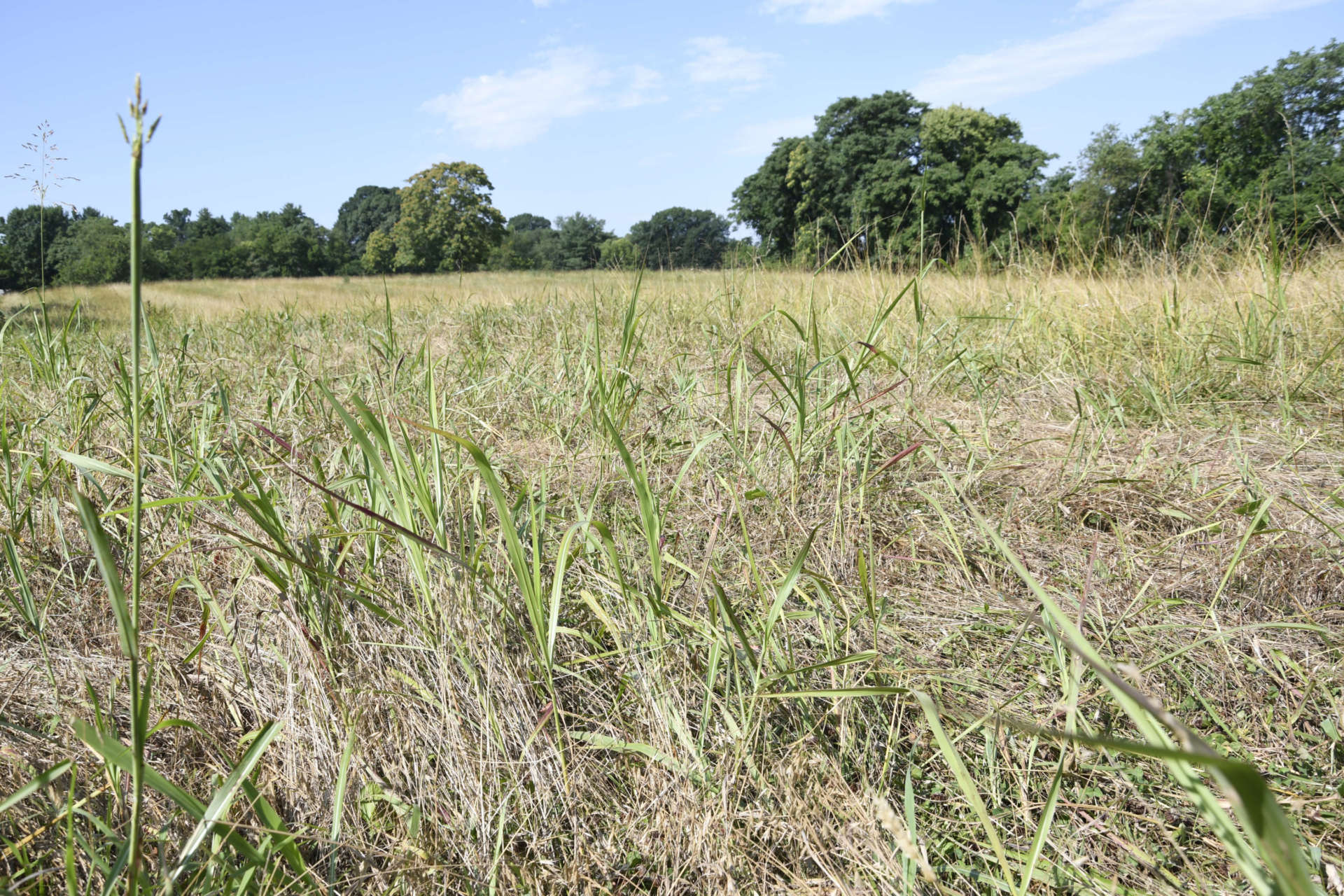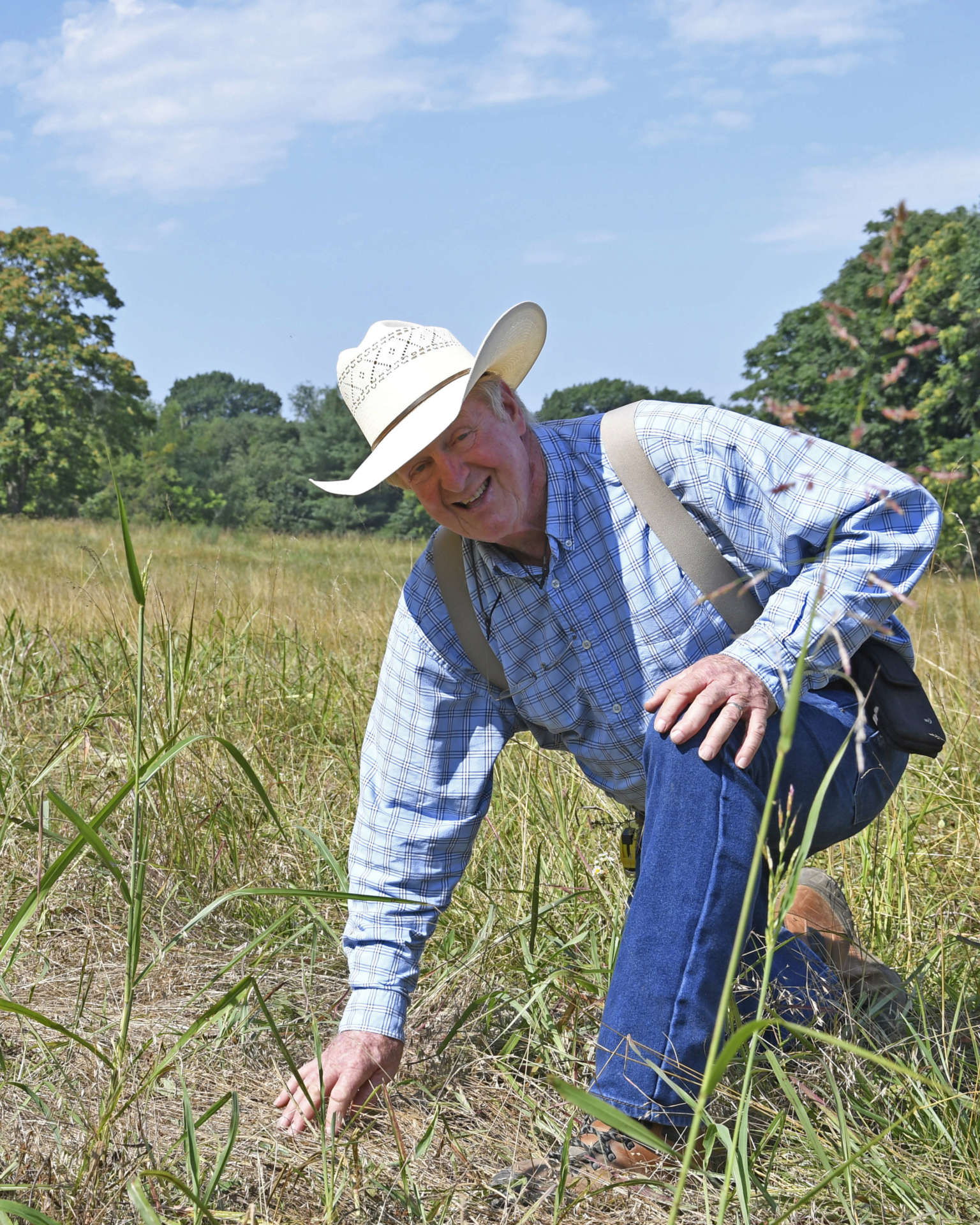ISSUED: 5 September 2023
MEDIA CONTACT: Cecelia Mason
SHEPHERDSTOWN, WV — Thanks to $1.4 million in Congressionally Directed Spending from the U.S. Small Business Administration, Shepherd’s Agricultural Innovation Center is moving forward to create a small business incubator space at its 158-acre Tabler Farm. West Virginia Senators Shelley Moore Capito and Joe Manchin secured the funding to make the incubator project possible.
The incubator will be located on a 10-acre field just inside the farm’s main entrance. The field will be divided into quarter- to half-acre plots where farmers with some experience can learn more about farming and expand their businesses.
 This field is being prepared for incubator plots.
This field is being prepared for incubator plots.
“One of the problems that many small-scale farmers have is access to land,” said Dr. Peter Vila, associate professor of environmental and physical sciences. “What this does is provide a plot of land where they can try different things and create their market plans at a nominal price.”
The incubator project will be geared toward those who have worked on a farm or have been large-scale gardeners or market gardeners who are looking to scale up.
“They’re coming in with somewhat of an idea of what they want to grow and with some experience. The incubator farm is where they get to really hone those skills,” said Dr. Brooke Comber, assistant professor of environmental sciences and the grant’s director.
The grant will cover the cost of erecting a building where workshops can take place. It will also cover purchases for equipment such as a mushroom media mixer and bagger, essential oil extractor, cold storage, and freezer space that will be available to rent for a small fee. Vila said the workshops that are planned and access to the equipment will help farmers who want to produce value-added products from what they grow.
“The value-added components are probably just as important, especially in creating an economically viable agricultural business enterprise,” he said.
Comer said the incubator program will also help farmers develop their business skills through a partnership with Shepherd’s College of Business, Recreation, and Education.
“That side of farming is so important that it doesn’t matter how good you are at growing produce, if you can’t sell produce you are not going to be a farmer very long,” she said. “Making sure people are tracking those things and understanding what’s a winner and what’s a looser is so important.”
Preparing the soil
As plans for the building progress, Paul Wilmoth, a farmer, Shepherd alumnus, and member of the Agricultural Innovation Center Advisory Board, is volunteering to help prepare the field for crops.
 “It’s a little bug I have. I’ve always wanted to improve the grounds and soils,” Wilmoth said. “This farm has been abused through the use of traditional farming methods for 50 years, and the ground has deteriorated. I thought they needed something to at least help them get started a little bit soil-wise.”
“It’s a little bug I have. I’ve always wanted to improve the grounds and soils,” Wilmoth said. “This farm has been abused through the use of traditional farming methods for 50 years, and the ground has deteriorated. I thought they needed something to at least help them get started a little bit soil-wise.”
Traditionally, farmers producing large fields of crops plow the ground at the end of the growing season. Wilmoth said driving a tractor on fields compacts the soil, so when it rains the ground washes away along with nutrients and any chemicals used. Regenerative agriculture differs from traditional farming because, at the end of the growing season, cover crops are planted. Wilmoth said keeping cover crops on a field helps fertilize and aerate the soil.
“You want to put plants in that produce a lot of carbon and organic matter on top of the ground and a root system that creates water channels,” he said. “When it rains, the water runs into the water channels instead of off the ground. That’s one of the principles of soil health—water infiltration. The more vegetation you have on top of the ground, the cooler the ground stays and the longer the water will stay.”
At Tabler Farm, Wilmoth planted spring oats and peas in early April. During the summer, he planted a mix of things like sunn hemp, buckwheat, sunflower, and mung peas.
“Each one of them has a different purpose,” he said. “Some have roots that grow deep, others grow shallow. Some produce more green mass on top of the ground. The sunflowers and buckwheat will hopefully help pollinators.”
In early to mid-September, crops such as turnups, radishes, cereal rye, and wheat go in.
“They get big roots in the ground and that creates big cavities for water to go into and it helps loosen the soil,” he said.
Wilmoth said by spring there should be a good mat of greenery on the field that can be used as a mulch bed to support the incubator plots or whatever cash crops the farm wants to plant.
Plans for the building will be finalized this fall and it’s anticipated the field will be ready for incubator farmers in the 2025 growing season.
— 30 —

